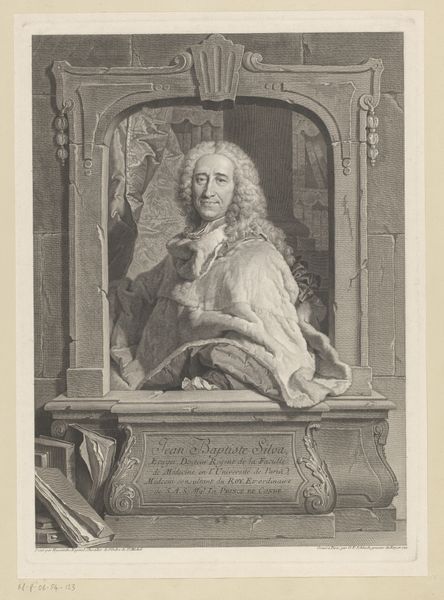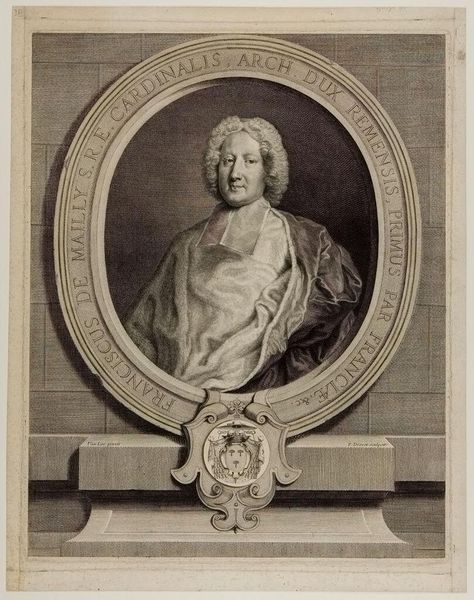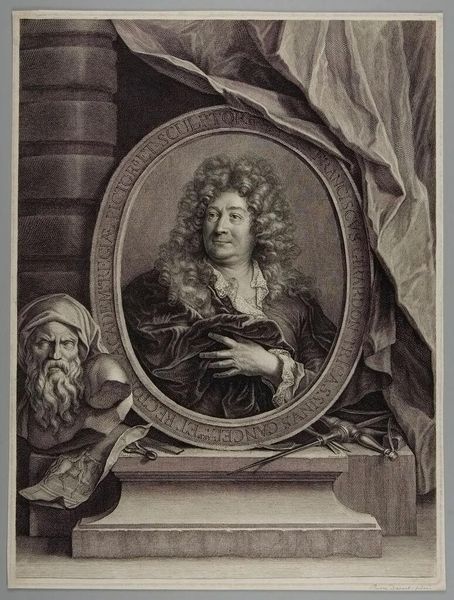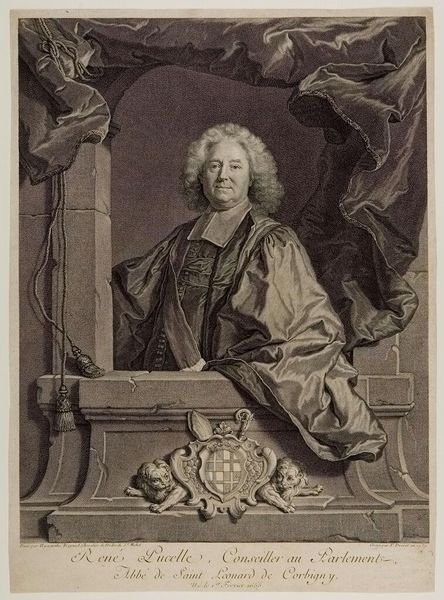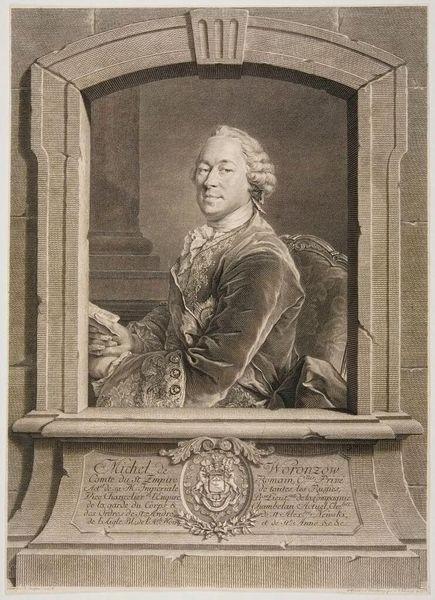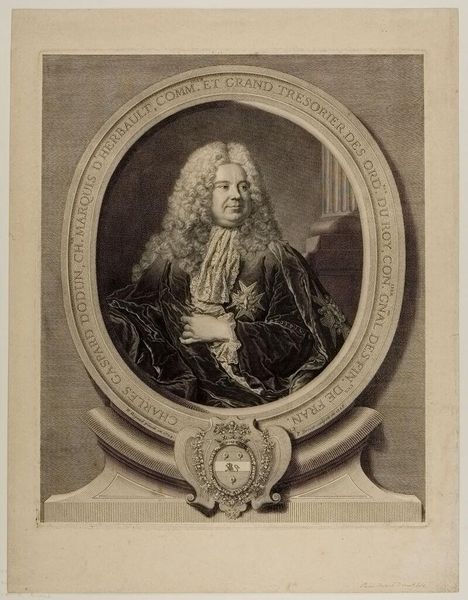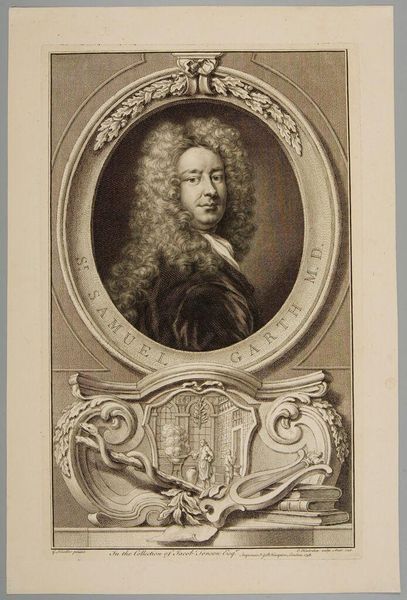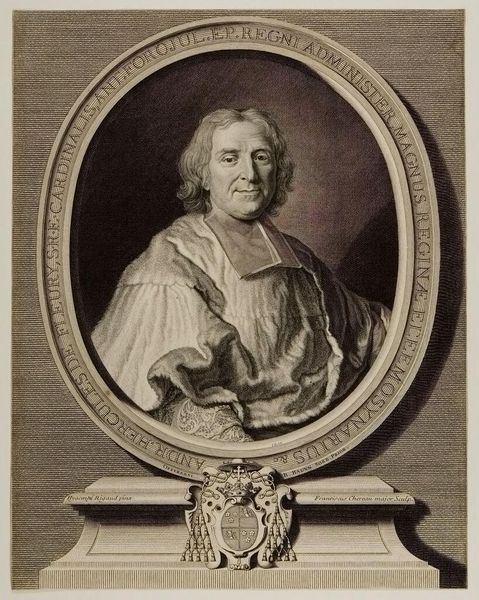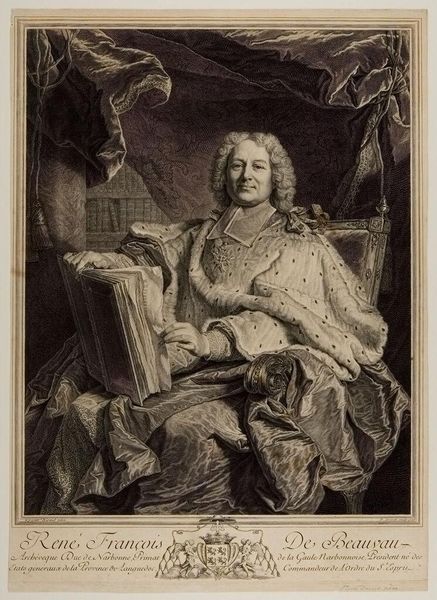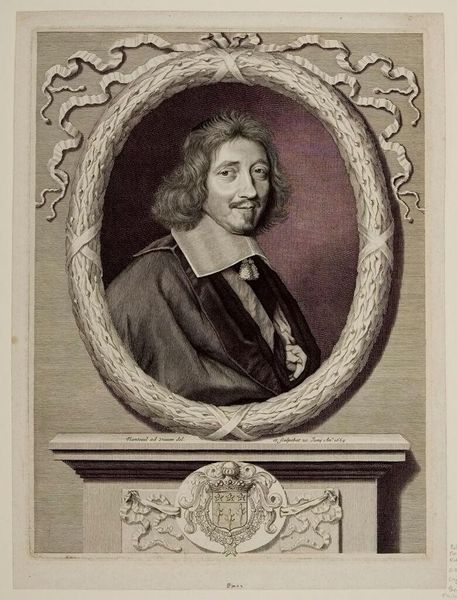
Copyright: CC0 1.0
Curator: This portrait of Jean Baptiste Silva by Georg Friedrich Schmidt presents a fascinating tension between the individual and the structures that define him. Consider the labor involved in its creation – the engraver's skill, the paper production, even the systems of patronage that sustained Schmidt. How do these material factors shape our understanding of Silva's status? Editor: That's a really interesting point. I was initially drawn to the subject himself – the wig, the ornate setting – but now I’m thinking about the process of image-making. How did the choices of materials influence the reception of Silva’s image? Curator: Exactly. The print medium democratized access to Silva's likeness, disseminating his image among a wider audience than a painted portrait ever could. The materiality of the print itself facilitated social mobility, both for the subject and the artist. This piece reminds us that art isn't created in a vacuum. Editor: That makes me think about how even the paper itself has a history of production and consumption tied to it. Thanks, I learned a lot!
Comments
No comments
Be the first to comment and join the conversation on the ultimate creative platform.
